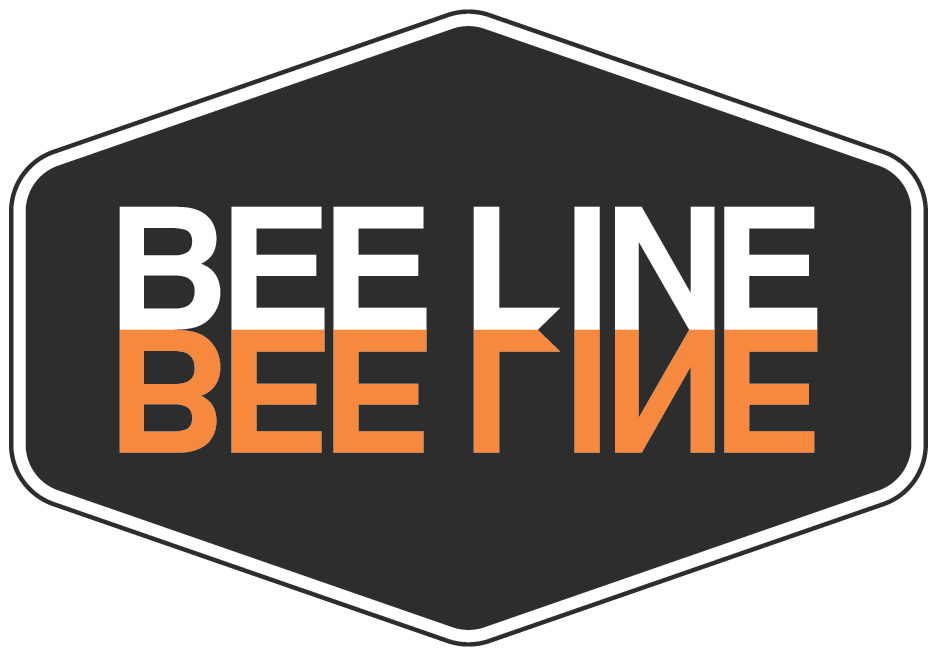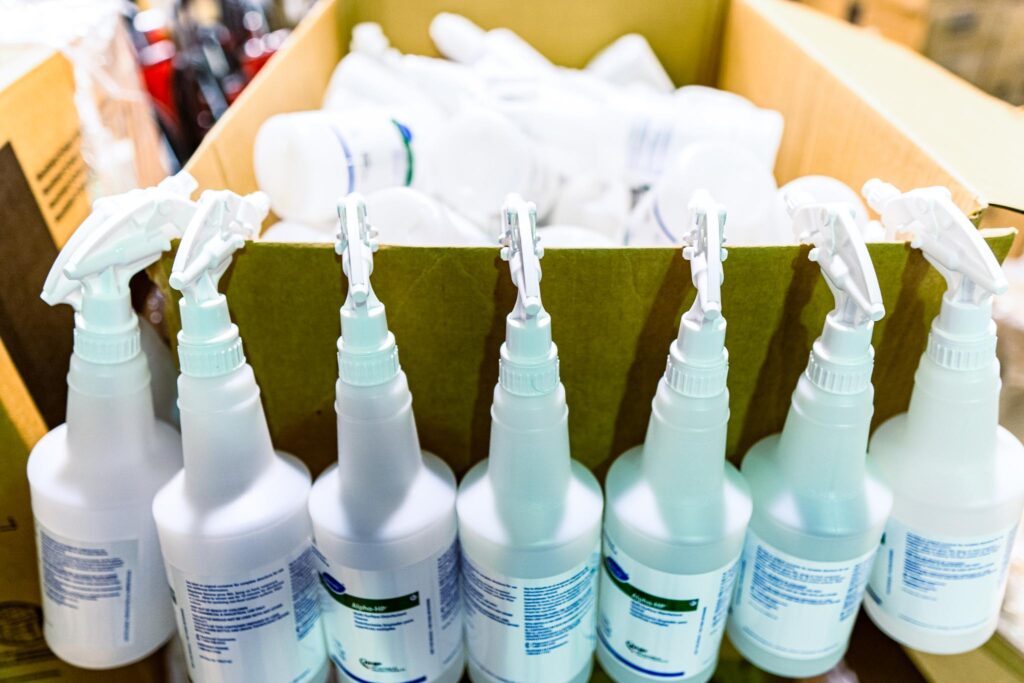Commercial spaces are breeding grounds for germs and bacteria. Although healthcare facilities tend to be at a higher risk for transmissible illnesses, that doesn’t mean that other industries are immune from risk. Industrial settings, offices, schools, banks, and even warehouses all succumb to the buildup of pathogens that visitors bring in on a day-to-day basis. But getting rid of them isn’t always as easy as it may seem. To help, you need the proper disinfectant. Here, we’ll talk about the differences between high-level disinfectant and low-level disinfectant and which one is best for your needs.
What is High-Level Disinfectant?
High-level disinfectant is a type of cleaning agent that’s proven to be effective at killing certain pathogens, viruses, bacteria, fungi, spores, and other contaminants. It’s designed to eliminate a wide range of microorganisms that can cause health-related issues or contribute to an outbreak in the community. High-level disinfectants are considered the strongest form of disinfection available and, therefore, are often used in healthcare facilities or other settings where the risk of infection is higher than average.
Due to their strength, high-level disinfectants can be dangerous to handle. When not used properly, they can also create toxins or pollutants that affect the overall indoor air quality. While using disinfectants of this strength, it’s important that the proper personal protective equipment (PPE) is used and that the handler understands the necessary protocols for safe application.
Although they can be dangerous if mishandled, high-level disinfectants are created with potent active ingredients that have undergone rigorous testing. They’ve been proven effective against a wide range of pathogens, making them a great option for healthcare settings, laboratories, pharmacies, and cleanrooms. Typically speaking, high-level disinfectants contain chemicals like chlorine compounds, hydrogen peroxide, or peracetic acid—all of which carry high antimicrobial properties.
When is High-Level Disinfection Required?
Since high-level disinfectants are capable of killing or inactivating nearly all microorganisms and infectious pathogens, they’re great in healthcare environments. Specifically, high-level disinfection should be used on reusable medical tools, surgical tools, throughout the intensive care unit (ICU), on respiratory equipment, and ultrasound probes. Essentially, any critical or semi-critical medical device that comes into contact with mucous membranes or broken skin requires high-level disinfection. In doing so, you can greatly reduce the risk of healthcare-associated infections and cross-contamination in your medical facility.
However, and this cannot be stressed enough, when performing high-level disinfection, safety is of the utmost importance. The application requires a specialized process that adheres to manufacturer instructions, contact time, PPE, and the proper disposal of hazardous disinfectants afterward. Therefore, it should always be performed by trained medical-grade cleaning professionals to maximize the health and safety of patients and staff.
Intermediate-Level Disinfection
It probably comes as no surprise, but intermediate-level disinfection is the next step below the high-disinfection level in terms of microbial kill efficacy. It’s used to disinfect certain microorganisms that may cause harm but won’t likely lead to catastrophic results. According to the Centers for Disease Control and Prevention (CDC), intermediate-level disinfection can be used on “non-critical clinical contact surfaces.” In general, intermediate-level disinfection is sufficient for things that come into contact with skin but not mucous membranes. It’s also commonly used in industries outside of healthcare, as it can reduce common pathogens that may cause illness.
Although intermediate-level disinfectants aren’t as potent as high-level disinfectants, they’ve still been shown to be effective at reducing a wide range of microorganisms and pathogens.
Some of the most common intermediate-level disinfectants include things like bleach, quaternary ammonium compounds, and phenolic compounds. They can also include mixtures of bleach and hydrogen peroxide. Although they’re not as strong as high-level disinfectants, it’s still necessary to practice care when handling intermediate-level disinfectants and applying them to surfaces—especially if you’re utilizing a mixture of two or more products.
What is Low-Level Disinfectant?
Finally, low-level disinfectants are considered to be the mildest form of disinfectant available. However, they’re still formulated to kill several different types of vegetative bacteria, some kinds of fungi, and a few viruses. They’re generally safe to use on any non-critical item that comes in contact with skin but doesn’t require more intensive sterilization. They’re typically composed of quaternary ammonium compounds but can also include hydrogen peroxide and sodium hypochlorite. Most often, low-level disinfectants are used in settings that don’t require more intensive cleaning.
Low-level disinfection is commonly used for routine cleaning and general disinfection in non-critical environments. Although they’re still proven to provide effective disinfection, they don’t target some of the more invasive microorganisms that intermediate-level disinfectants and high-level disinfectants do. This means that they’re also less likely to damage sensitive equipment and surfaces or create skin irritation.
When is Low-Level Disinfection Used?
Low-level disinfection is commonly used to clean offices, warehouses, industrial settings, and schools, as the ingredients carry a low risk of skin irritation. It’s suitable for any type of surface or object that doesn’t come into contact with biological fluids or hazardous materials that could result in infections. This makes low-level disinfection a great option for floors, walls, countertops, and other non-porous surfaces in healthcare settings. Outside of healthcare facilities, low-level disinfection is good for general maintenance and regular cleaning.
Since the products are mild, the application can be performed by most adults. However, it’s still important to avoid excessive contact with the skin, inhaling chemicals, or direct contact with the eyes, nose, or mouth.
Determining the appropriate level of disinfection for your facility depends on several factors, including the nature of your industry, the type of surfaces or equipment involved, and the level of potential microbial contamination. Therefore, it’s crucial to consult industry guidelines, regulations, and recommendations to ensure compliance and the highest level of cleanliness. Just as there are procedures and best practices for handling biohazardous materials, each facility requires a different level of attention to detail to keep everyone safe and maintain an efficient working environment. The first step is determining which level of disinfectant your industry needs.
To help ensure your facility is kept at the highest level of cleanliness, partner with Bee Line. As the region’s leading medical-grade cleaning company, Bee Line provides unparalleled attention to detail when cleaning healthcare facilities, industrial settings, and several other types of facilities. Our team is equipped with the knowledge, supplies, and protocol necessary for eradicating common diseases from surfaces and delivering the highest standards of medical-grade cleaning services, regardless of your business. To learn more about our commercial cleaning procedures, receive a quote, or reach our emergency services, contact Bee Line today by calling 312-BEE-LINE.
About The Author
Tom Klimaszewski
author
Tom is your go-to-guy for any health and safety concerns on-site! Tom has lots of experience as a Safety and Compliance Manager in commercial cleaning, healthcare, office, airport settings, with his education in Environmental Studies. He has earned his Certificate Mastery in Infection Prevention (CMIP) and Trainer for Certified Surgical Cleaning Technician (T-CSCT), so to say he’s knowledgeable would be an understatement. When he’s not combatting germs, you can find Tom painting, writing songs, hiking, fishing, and belting out his favorite tunes at karaoke! His favorite part of working with Bee Line is the collaborative and supportive environment.




